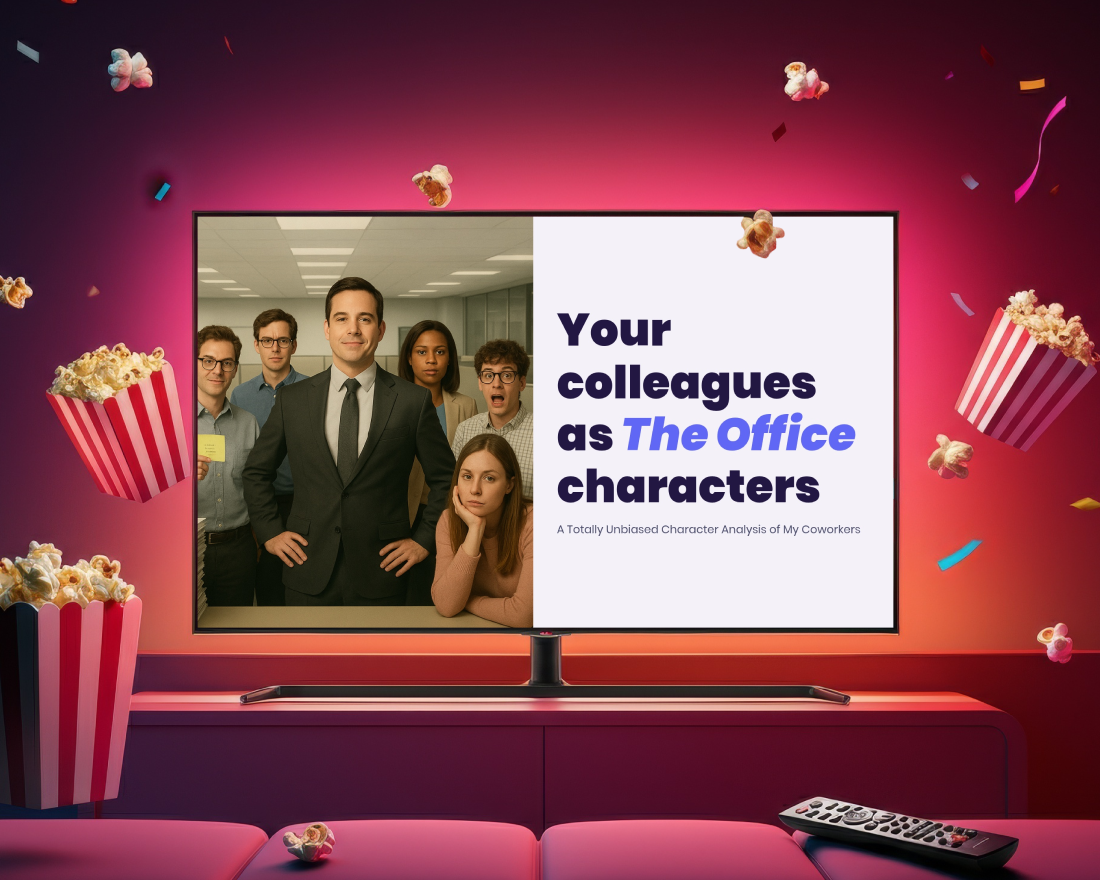
The way businesses work is constantly changing. From new trends, to innovative technologies, teams have to be willing to pivot with the environment for the sake of the company’s success. The newest innovation disrupting the way people work is AI, more specifically, generative AI.
The primary purpose of artificial intelligence (AI) in the workplace is to automate tedious, repetitive tasks. Things like creating presentations from scratch, tinkering with text boxes and image sizes in design, and proofreading documents can all be automated to make workflows more efficient. Many tech companies have implemented OpenAI in their own products to add a generative AI element to their offering, but teams are also leveraging AI tools to improve their internal workflows.
What is generative AI
Generative AI is a system capable of generating content or data like images, text, music, and other media in response to a single word or phrase prompt. Teams are using generative AI to help tackle repetitive, mundane tasks such as responding to emails, creating graphics or images, drafting articles, and creating presentations— among many other things.
An astounding 95% of managers have already started using AI for work-related content, but that doesn't mean it isn't overwhelming trying to navigate where to start. The best place to start is the beginning: education and self-testing. In fact, 93% of managers say that they will encourage their employees to test and use AI tools if the tools will help them perform better at work. Where are your employees allocating the majority of their time each day? Is there an AI tool that can help them be more productive to make room for new projects and tasks?
How businesses can leverage AI now
Many businesses are already implementing AI into their workflows to increase productivity. Here are 5 easy ways teams can use generative AI to work smarter, and faster.
Create presentations faster
If you were to ask people what they dread most about presentations, we’d guess starting with a blank canvas is high on their list. It can be a time suck, but doesn’t have to be. Now with AI, teams can create entire presentations with a single prompt. This helps non-designers create a blueprint— or starting point— for a presentation that they can then customize with their needs.
Beautiful.ai’s DesignerBot makes it easier than ever for non-designers to create a new presentation from scratch, regardless of the content. Users can opt to create a new deck, or single slide, with DesignerBot by entering a short description (or prompt) based on what they need. Teams have the liberty to add as many keywords as they see fit to generate a fully built, totally customized presentation draft populated with appropriate text, layouts, photos, icons and design.
Respond to customers
The most common way businesses are leveraging AI for customer success is through chatbots. Teams can use generative AI to create chatbots which will automatically respond to customer inquiries and provide assistance where needed. Similarly, generative AI can be used to create automated email responses to the most frequently asked questions. This can help businesses respond to customer emails quickly and efficiently, improving customer satisfaction.
To personalize customers’ experiences, you might also use generative AI to analyze customer data to provide personalized product or service recommendations. This can help businesses increase sales and improve overall customer loyalty.
Expedite copywriting
Say goodbye to writer’s block! By now you’ve probably heard of OpenAI and ChatGPT, software that responds to prompts with customized content. Businesses are leveraging that technology to help them expedite the copywriting process. It uses artificial intelligence to rework your copy so you can craft the perfect message, faster. Think of it as your own personal wordsmith in your backpocket to help you structure your thoughts, get a first draft for an article or press release, adjust your tone, or refine your content. Tools with generative text inspire a more impactful message in half the time, so teams can focus on their story instead of worrying about their tone of voice or first draft sounding right.
Using generative AI for copywriting can help marketing teams produce more content with less resources, allows sales teams to draft emails or content for pitches without a bottleneck, and gives smaller teams the collaborative partner they need to nail their client-facing materials.
Generate unique art
Finding the right image to convey your message can be difficult, especially if you have a lean design team. Businesses can leverage generative AI to create unique art for their website, socials, or sales collateral. Tools like Dall-E— which uses a prompt to generate original imagery— are beneficial for creating one-off designs to complement an article, paint a better picture of an overarching idea in a presentation, or share on social media. But generative AI can also be used to assist graphic design efforts by automating design processes. This is great for solopreneurs, small marketing teams, or designers who want to increase their efficiency and output.
Natural language coding
Similar to writing content for marketing, generative AI can analyze natural language descriptions of coding tasks and automatically generate code to perform said task. This can save businesses time and resources, especially when working on more tedious and repetitive projects. It can also provide suggestions for code snippets or functions that can be used to complete specific tasks. This can help programmers and engineers write code faster and with fewer errors.







.gif)